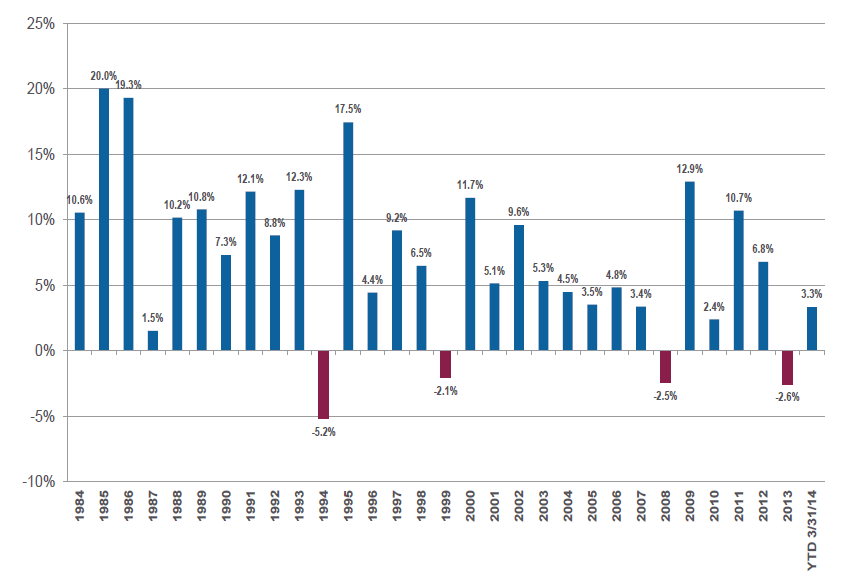Pick Your Muni Funds Carefully
Post on: 18 Июнь, 2015 No Comment

All eyes are on the municipal bond market given the potential for higher income taxes and a growing number of defaults in the public sector. Given the uncertainty, an ideal way to capture the sector is with the right mutual fund. However, selecting a fund is more than choosing the one with the highest yield. Credit quality, fees, diversification and duration are important to ensuring your fair share of return.
I screened a Morningstar® Principia ® database to compare intermediate-term national municipal bond funds. My criteria for selection included funds that held bonds with an average rating of investment grade and at least 5 years of returns. When the same fund had two share classes, I selected the share class with the lowest fee. I did not set a minimum purchase level (some funds have a $1 million minimum) and I did not include select single state funds. Principia showed 23 funds that met my criteria, based on June 30, 2012 data.
Figure 1 highlights the number of individual securities held in each fund, based on the latest Morningstar data. Funds with the most securities are on the left and funds with the least are on the right. The tickers for all funds in the study are shown on the X axis (bottom).
Figure 1: Number of Holdings in National Intermediate-Term Municipal Funds
Source: Morningstar® Principia® as of June 30, 2012 and Vanguard.com as of July 20, 2012.
Ten of the funds hold 500 or more bonds and four funds held less than 100 bonds. The fund on the far left − which holds over 3,600 bonds − is the Vanguard Intermediate-Term Tax-Exempt Fund Admiral Shares (VWIUX). Now that’s the kind of diversification I like!
Oddly, VWIUX is not a municipal bond index fund even though it holds several thousand bonds. In my book, All About Index Funds. I label this fund an “almost-index” because it better represents the municipal bond market than any index fund or exchange-trade fund (ETF) available. It’s also worth noting that VWIUX has no sale load and an initial minimum purchase amount of only $50,000.
Figure 2 compares the net fund expense ratios (ER) to 5-year returns ending June 30. Fund ERs are on the X axis (bottom) and 5-year annualized returns are on the Y axis (left). Sales loads are not taken off the returns, although it should be noted that 4 of the 23 funds do have sale loads that ranges from 1.0 percent to 4.75 percent.
Source: Morningstar® Principia® data through June 30, 2012
I added a regression line to show the relationship between ER and fund performance. Generally, the funds with the highest ER have the lowest returns. However, the funds with the lowest ER did not have the highest returns, although they were above average. Rock bottom ERs increase the probability of earning a good return, but typically do not lead to the highest returns.
Figure 3 compares the performance of the lowest fee fund (VWIUX – ER 0.12 percent) to the other 22 funds. The illustration was created subtracting the 5-year return of VWIUX from the returns of the other 22 funds and then sorting the results from smallest (underperformers) to highest (outperformers).
Figure 3: Relative 5-year Performance of VWIUX to Other Funds
Source: Morningstar Principia data through June 30, 2012
Figure 3 is the truth-teller in the municipal fund market. The index-like VWIUX fund, with a low 0.12 percent ER, outperformed three-quarters of the remaining funds by an average of 0.7 percent annually. Only one-quarter of the funds beat the index-like VWIUX with an average outperformance of 0.5 percent.
The odds are low when trying to select an actively managed fund that will beat an index fund and the meager outperformance relative to high underperformance doesn’t make it a fair game. That bet is not worth the risk. I discuss this concept in depth and across all asset classes in The Power of Passive Investing.
Two other factors should be considered when selecting a municipal bond fund: credit quality and duration, which is a measure of interest rate risk. The average credit quality of 21 of the 23 funds in my list were rated “A” by Morningstar,including VWIUX. Two funds were listed as “BBB”, which is one notch lower. The current duration of fund holdings averaged 5-years with a range from 4.2 to 5.9 years, which is fairly close. The net asset value (NAV) of these funds would fall about 5 percent on average if interest rates shot up 1 percent in a short period of time.
I have personally managed individual municipal bond portfolio for many years. My company, Portfolio Solutions®. also invests some client portfolios in municipal bond mutual funds.














